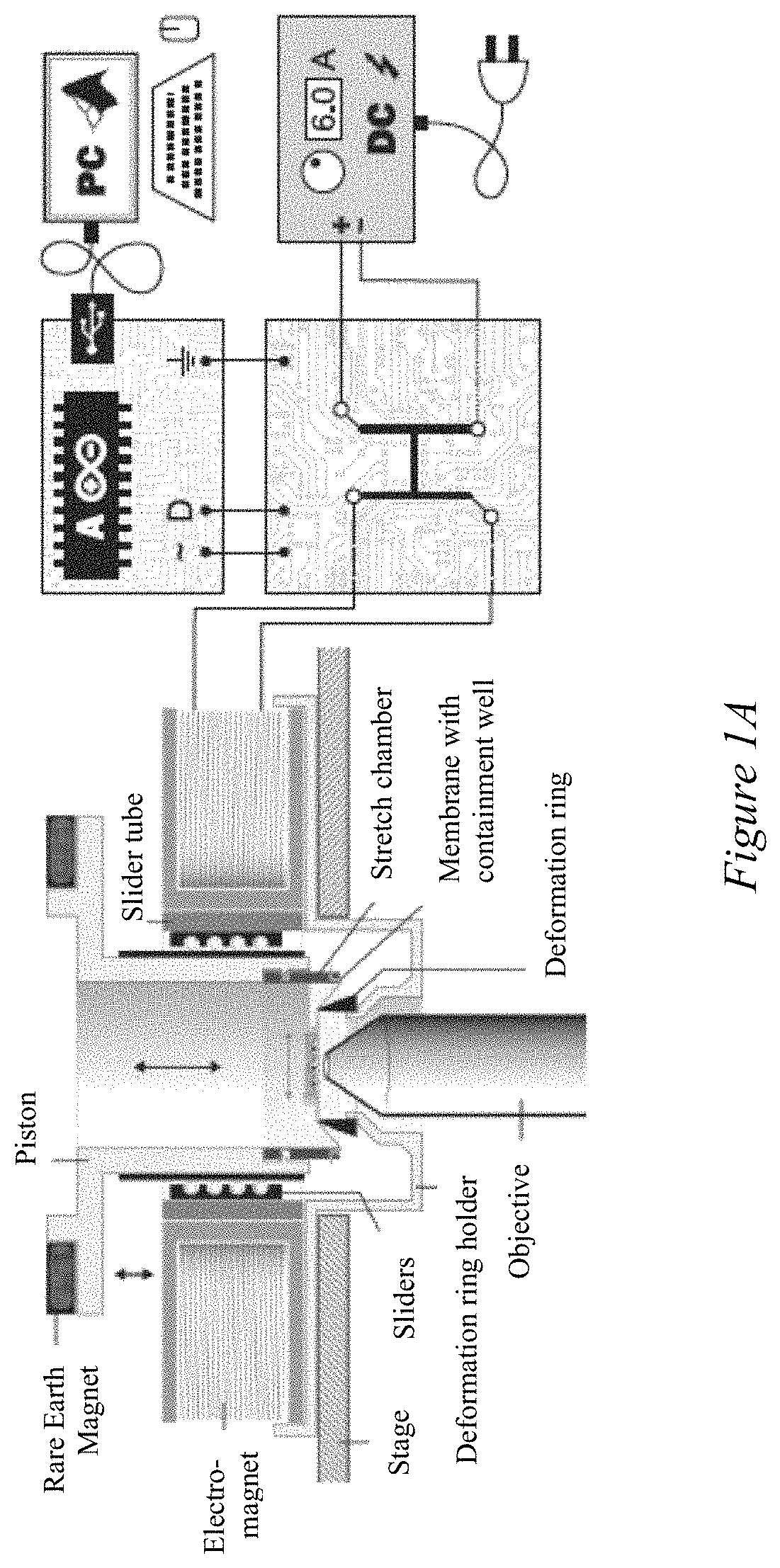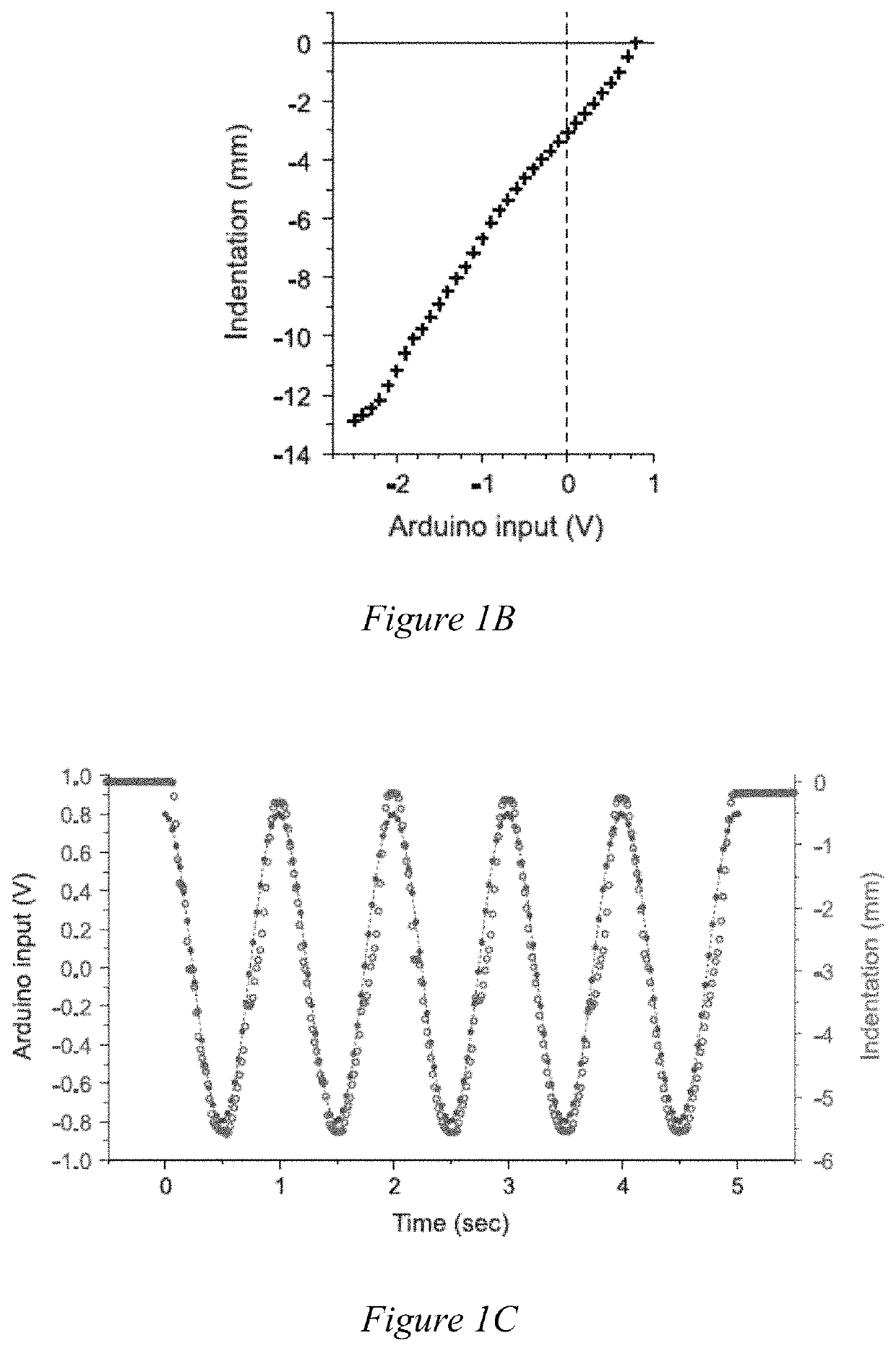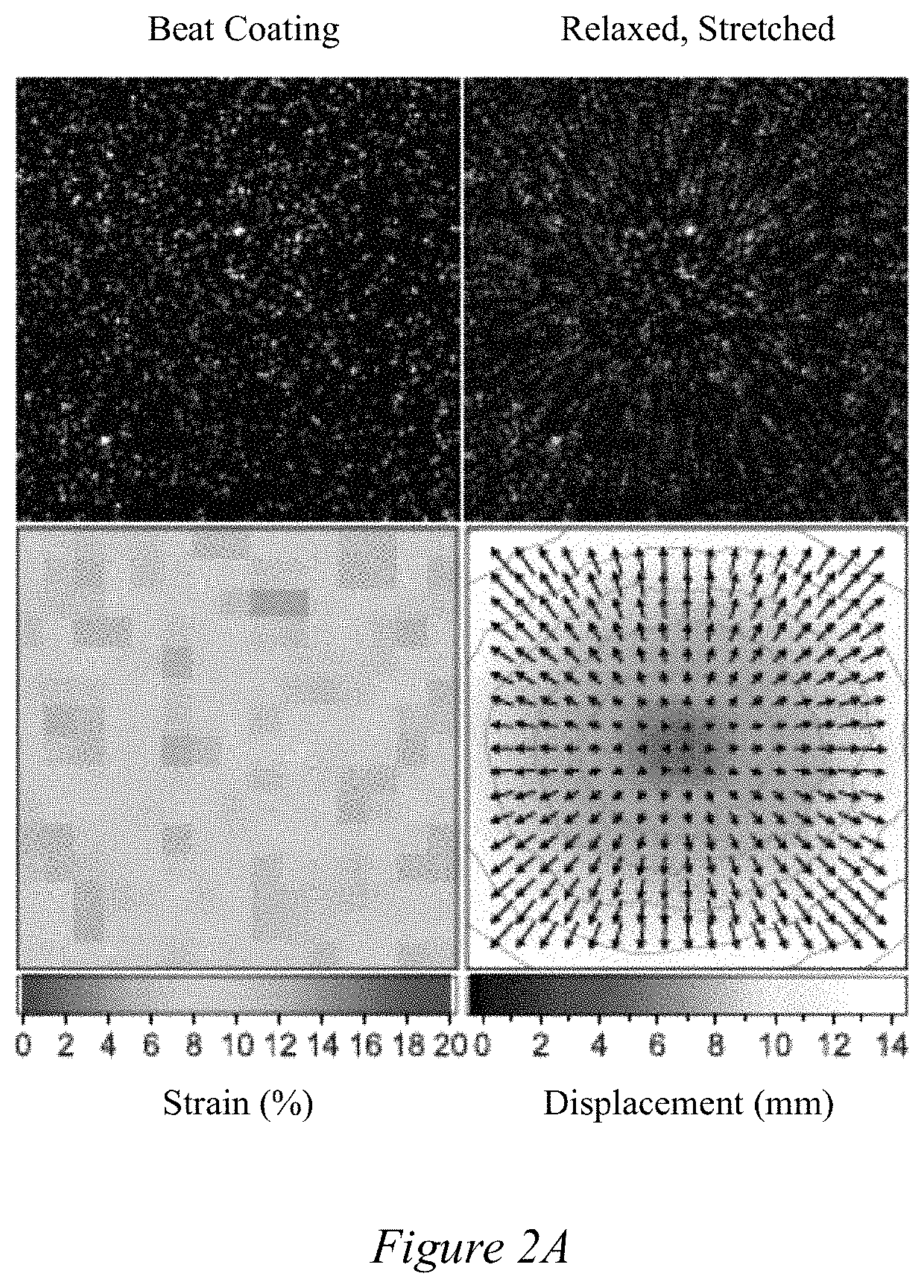Methods and device for controlled cell stretch and imaging
a controlled cell and imaging technology, applied in measurement devices, scientific instruments, instruments, etc., can solve problems such as dna damage increase, and achieve the effect of dna damage increas
- Summary
- Abstract
- Description
- Claims
- Application Information
AI Technical Summary
Benefits of technology
Problems solved by technology
Method used
Image
Examples
example 1
tch Device—Fabrication
[0046]A cell stretch device was designed to acquire high-magnification images of cells during the application of equiaxial strain while also avoiding the use of expensive materials or complex designs. Two types of three-dimensional (3D) printers were used to fabricate a majority of the components: Objet30 (Computer Aided Technology, Buffalo Grove, Ill.), using the material VeroClear (OBJ-04055; Computer Aided Technology), and the uPrint SE Plus (311-20200; Computer Aided Technology), using ABS+. Designs for the device components were created as CAD files using SolidWorks (v. 2018; Dassault Systèmes SolidWorks). All parts were printed at the Integrated Teaching and Learning Laboratory at the University of Colorado Boulder.
[0047]The main body consisted of four parts: a deformation ring holder, an electromagnet case, a slider tube, and a piston (FIG. 1), which were printed using the uPrint SE Plus. The deformation ring holder was designed to fit into the circular ...
example 2
tch Device—Control
[0049]To operate the stretch device, a simple control circuit was designed in which an Arduino microcontroller (DEV-13975; SparkFun Electronics, Niwot, Colo.) modulated the magnitude and direction of a constant 6 A current from a DC power source (9129B; BK Precision, Yorba Linda, Calif.) to the coil via an H-bridge (RB-Cyt-132; RobotShop, Mirabel, Quebec, Canada). Two signals from the Arduino to the H-bridge controlled the current flow: A power-wave-modulation pin sending low voltage from 0 to 5 V controlled the current intensity (FIG. 8), and a digital pin (either 0 or 1) controlled the direction of the current to allow lifting of the piston in the relaxed state or attracting the piston downwards to intendent the engaged membrane. Arduino inputs were controlled via MATLAB (v. 2018b; The MathWorks, Natick, Mass.) via a USB interface and the Arduino Support from MATLAB package, and a custom-written code was used to operate the device.
example 3
tch Device—Calibration
[0050]To measure piston movement and associated membrane indentation in response to electromagnetic fields, a laser distance sensor (LJ-G5001P; Keyence, Osaka, Japan) was pointed vertically at the top of the piston, and changes in vertical movement were recorded via the Keyence LJ-Navigator software (v. 1.7.0.0; Keyence). Particle tracking (L. Martiel, A. Leal, et al., M. ThéryMeasurement of cell traction forces with ImageJMethods Cell Biol, 125 (2015), pp. 269-287) was used to determine the amount of strain applied to the membrane in response to electromagnetic fields. For strain measurements, containment wells were coated with 2 μm blue fluorescent beads (F8824; Life Technologies, Carlsbad, Calif.), and images were recorded before and after membrane indentation on an inverted epifluorescence microscope (Ti-Eclipse; Nikon) with a 60× water immersion objective (0.26 μm / pixel) and an EMCCD camera (iXonEM+; Andor Technology, South Windsor, Conn.). Bead displaceme...
PUM
 Login to View More
Login to View More Abstract
Description
Claims
Application Information
 Login to View More
Login to View More - R&D
- Intellectual Property
- Life Sciences
- Materials
- Tech Scout
- Unparalleled Data Quality
- Higher Quality Content
- 60% Fewer Hallucinations
Browse by: Latest US Patents, China's latest patents, Technical Efficacy Thesaurus, Application Domain, Technology Topic, Popular Technical Reports.
© 2025 PatSnap. All rights reserved.Legal|Privacy policy|Modern Slavery Act Transparency Statement|Sitemap|About US| Contact US: help@patsnap.com



